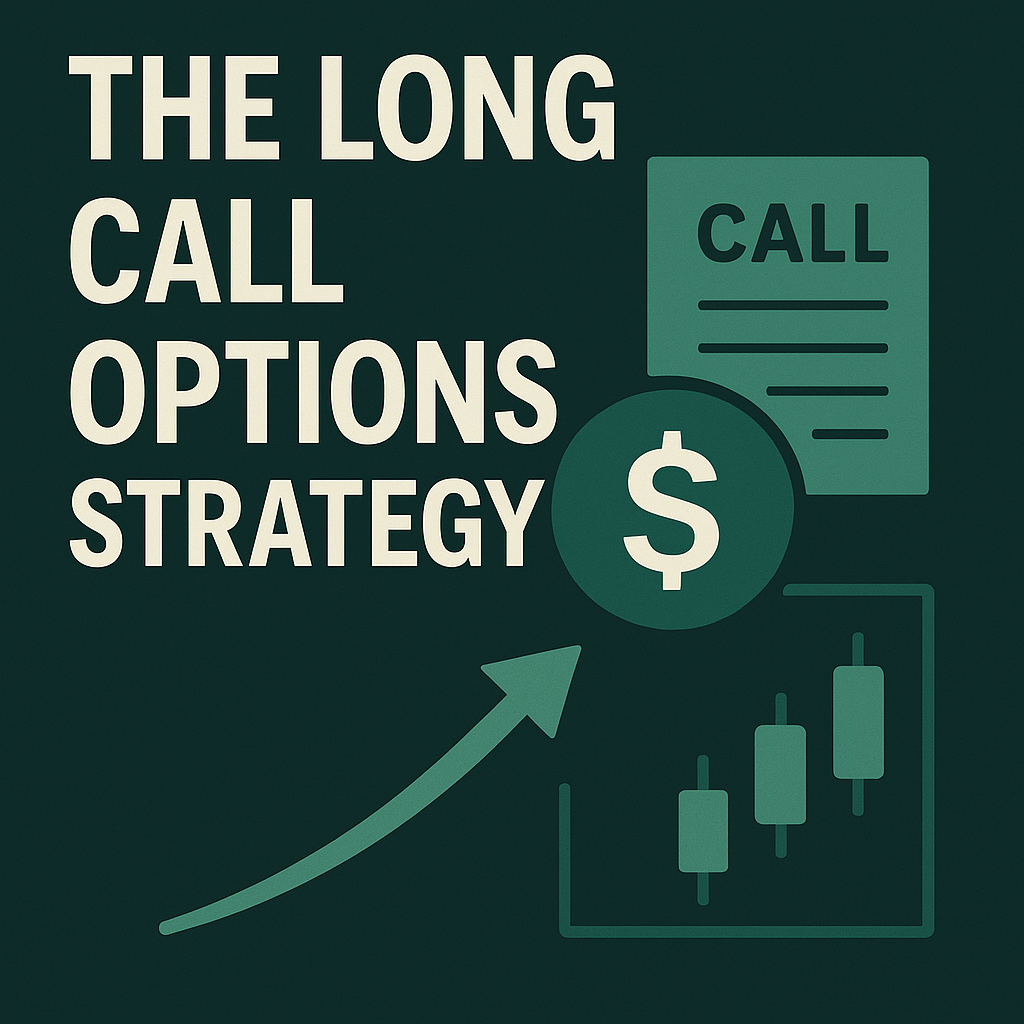The Long Call Options Strategy

When it comes to trading options, one of the most straightforward bullish strategies is the Long Call. It’s a favorite among traders expecting a significant upward move in a stock’s price, offering a defined risk and unlimited upside. In this post, we’ll dive into what a Long Call is, how it works, and how key choices—like strike price and expiration—can significantly affect your results.
What Is a Long Call?
A Long Call involves buying a call option, which gives you the right (but not the obligation) to buy 100 shares of a stock at a predetermined price (called the strike price) on or before a specific date (called the expiration date).
This strategy is bullish—you profit when the stock rises above the strike price plus the premium paid.
Max Profit and Max Loss
Max Loss:
The most you can lose is the premium paid for the option. This is your upfront cost and represents your total risk. For example, if you buy a call for $2.00, you’ll pay $200 per contract (since each contract covers 100 shares). Even if the stock goes to $0, your loss is capped at that $200.
Max Profit:
There is no ceiling on your profit. The higher the stock goes above the strike price, the more valuable your call becomes. Theoretically, your upside is unlimited.
Break-Even Price:
The stock must rise above the strike price plus the premium paid to start generating a profit.
For example:
Strike Price = $50
Premium Paid = $2
Break-Even = $52
Why Use a Long Call Strategy?
Traders use Long Calls for several reasons:
1. High Upside With Limited Risk
You can control 100 shares of stock for a fraction of the cost of buying the shares outright. This makes it capital-efficient.
2. Bullish Viewpoint
If you expect a strong upward move in a stock—due to earnings, news, or technical signals—a Long Call gives you exposure to that upside without the full capital outlay.
3. Speculation Without Margin
Unlike short-selling or buying shares on margin, Long Calls do not require borrowing money or paying interest.
4. Hedging or Leveraged Exposure
Some traders use Long Calls as a way to hedge short-term risks or add leveraged exposure to a small part of their portfolio.
The Critical Role of Strike Price and Expiration
When trading Long Calls, strike price and expiration date dramatically affect your risk/reward profile.
1. Choosing the Strike Price
- In-the-Money (ITM):
The strike is below the current stock price. These calls are more expensive but have higher delta, meaning they move more closely with the stock. Good for conservative bullish bets. - At-the-Money (ATM):
The strike is near the current stock price. These offer a balance of cost and sensitivity to movement. - Out-of-the-Money (OTM):
The strike is above the current stock price. These are cheaper but need a larger stock move to become profitable. Higher reward, but also higher risk of expiring worthless.
🧠 Tip: Use the Options Profit Calculator to visualize how different strike prices affect your potential profit or loss.
2. Selecting the Expiration Date
- Short-Term (1–4 weeks):
Cheaper premiums, but you need the stock to move quickly. These options decay in value faster (higher time decay or “theta”). - Medium-Term (1–3 months):
A good balance for most traders. Gives the stock more time to move while still offering manageable premiums. - Long-Term (3+ months, or LEAPS):
More expensive, but much less affected by time decay. Ideal if you’re bullish over several months.
🧠 Considerations:
- Longer expirations reduce time decay but cost more.
- Shorter expirations require precise timing.
- Your profit window shrinks as expiration approaches, especially if you’re OTM.
Example Scenario
Let’s say you’re bullish on XYZ stock, currently trading at $95.
- You buy a $100 call expiring in 30 days for $2.00.
- Your total cost = $200 per contract.
- For you to break even, XYZ must rise to $102.
- If XYZ hits $110 before expiry, your option is worth $10, or $1,000.
- Your net profit = $1,000 – $200 = $800 (a 400% return).
But if XYZ stays under $100, your call expires worthless, and you lose the $200.
Key Takeaways
- A Long Call is a bullish strategy with limited risk and unlimited reward.
- Your risk is the premium paid. Your reward depends on how far the stock climbs above the strike price.
- Strike price and expiration dramatically affect the risk/reward ratio.
- Time decay works against you—especially in the final weeks.
- Ideal when you expect a strong, quick upside move in the stock.
Before you make your next trade, visualize it with real numbers at OptionsProfitCalculator.com. Our interactive tools show you exactly what you could gain—or lose—at any price point.